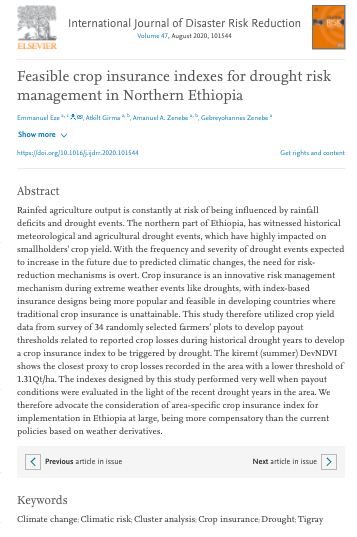Feasible crop insurance indexes for drought risk management in Northern Ethiopia

ABSTRACT
Rainfed agriculture output is constantly at risk of being influenced by rainfall deficits and drought events. The northern part of Ethiopia, has witnessed historical meteorological and agricultural drought events, which have highly impacted on smallholders’ crop yield. With the frequency and severity of drought events expected to increase in the future due to predicted climatic changes, the need for risk-reduction mechanisms is overt. Crop insurance is an innovative risk management mechanism during extreme weather events like droughts, with index-based insurance designs being more popular and feasible in developing countries where traditional crop insurance is unattainable. This study therefore utilized crop yield data from survey of 34 randomly selected farmers’ plots to develop payout thresholds related to reported crop losses during historical drought years to develop a crop insurance index to be triggered by drought. The kiremt (summer) DevNDVI shows the closest proxy to crop losses recorded in the area with a lower threshold of 1.31Qt/ha. The indexes designed by this study performed very well when payout conditions were evaluated in the light of the recent drought years in the area. We therefore advocate the consideration of area-specific crop insurance index for implementation in Ethiopia at large, being more compensatory than the current policies based on weather derivatives.